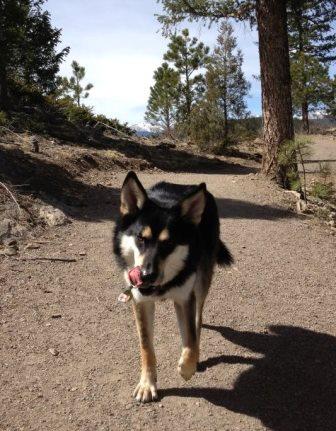NaturoBURGERS™ and NaturoBITES™ Frozen Food
TRANSITIONING
Transition your dog or cat slowly to any new diet. The best way to do this is to gradually add a little more new food and a little less old food to each meal, mixing the old with the new, and increasing the ratio of new food at each feeding until your pet is eating only the new food. See Transitioning for more detail. Dogs generally transition easier than cats, but all is possible. If your cat or fussy dog is having trouble with the switch, lesson the amount of new food at each interval and make the transition slower and more gradual. Taking a long time to switch is better than not switching at all.
Dogs and cats perceive your emotional state. It is crucial that you approach every step of the transition with a positive mindset and CONFIDENCE. If you are tentative, nervous, or doubtful, your pet will be, too. See Transitioning for more detail.
HANDLING AND INSTRUCTIONS
Keep naturoBURGERS™ and naturoBITES™ frozen. Thaw in the fridge, and get into a thawing cycle that matches your pet’s daily intake. NaturoPETic frozen foods are good for over six months in the freezer, and 3-4 days in the fridge. Once you get used to the thawing cycle from freezer to fridge to bowl, this will be simple.
NaturoBURGERS™ and naturoBITES™ may be cooked, but cooking is not recommended because heat destroys enzymes, denatures protein, and basically changes the chemical composition of whole foods. With that said, if it helps your pet in the transitioning stage, warming up the food may be helpful early on.
Once your pet is comfortable eating the new food, it is better to feed naturoBURGERS™ and naturoBITES™ frozen than cooked, if need be. We tend to humanize our pets, so feeding the meals frozen seems undesirable. But if your dog or cat eats the food frozen, that’s perfectly okay. Optimally, though, get into a thawing cycle from freezer to fridge to bowl.
PHYSIOLOGICAL CHANGES
INITIAL STAGE OF DETOX
If your dog or cat has been eating a conventional commercial diet for a long period of time, you may witness temporary symptoms of detoxification. This can be scary for pet owners. The process is actually a healthy one, as the dog or cat is getting “unsick”. What this means is that body is purging itself of toxins. Dogs and cats who have been on steroids, antibiotics, and other drugs for extended periods are prone to lengthier detox periods.
Common Signs of Detoxification:
- Mucous around poop
- Diarrhea
- Shedding
- Runny eyes
If your dog or cat has indigestion or other gastro-intestinal discomforts, it’s a good idea to supplement the diet with probiotics and/or digestive enzymes.
BENEFITS FROM EATING FRESH FOOD
 Shinier coat
Shinier coat- Healthier skin
- Less smelly and greasy fur
- Cleaner teeth and healthier gums
- Fresher breath
- Reduced allergies
- Improved digestion
- Smaller and less smelly stools
- Increased energy and stamina
- Increased mobility in older pets
- Decreased nervous hyperactivity
- Less trips to the veterinarian
- Reduced or no need for dental work
- Existing health problems can often be improved
- Disease prevention*
*While we can’t guarantee that any one particular disease will be cured or prevented, the fact is that there are many diseases pets get nowadays that their ancestors did not get. We are generally complacent about this abundance of disease because we believe that it’s just the way it is. When a dog is diagnosed with diabetes, for example, we tend to think this was inevitable. These beliefs need to be re-thought. The same way a person who eats a fresh, natural diet comprised of whole foods will be healthier than a person who eats fast food every day, a pet who eats its fresh, natural diet will be healthier than one who eats “junk” food. Bags and cans of conventional commercial foods are our pet’s version of fast food. Convenient, yes. Cheap, often. Healthy? No. And an unhealthy diet fosters disease.